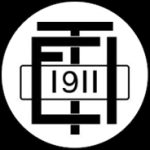Overview
2D reconstruction 3D / 4D modelling and reconstruction Ancient Books Apps / Interfaces for data visualization Archaeological or architectural heritage Archive Audiovisual Heritage Digital Cultural Heritage Digital Humanities Digital Infrastructure Digitization of collections Drawings, prints, and other pictorial sources GIS / HGIS Historical Documents (e.g. Notarial sources; Census records; Ecclesiastical documents; Correspondence) Intangible Heritage Landscape reconstruction Library Linked Data Movable Heritage Newspapers and magazines Persons data Photogrammetry Photos Platform for data aggregation or retrieval Urban History Videos
Though World’s Fairs were among the West’s largest mass-attended events during the 19th and 20th centuries, they were also ephemeral occurrences designed to exhibit, rather than preserve, the changing world of modernity. Turin 1911 was no exception: once the fair was dismantled, its artifacts were scattered among institutional archives and private collectors, making it nearly impossible to be studied in a systematic manner. Until today.
The Turin 1911 Project is not only a physical and digital archive that collects and preserves thousands of exposition items into a widely accessible and searchable online archive. It is also the only existing digital project that combines the application of shared international standards for cataloging and controlled terms, with the virtual reconstruction of key areas of the Turin fairgrounds.
The project’s 3D models, all metrically controlled and inserted in the original context of the fairgrounds, are based on archival materials and constitute the closest rendition of the architectural structures that were dismantled soon after the fair closed its doors.
The Turin 1911 Project at UC San Diego represents the world’s largest physical and digital collection of materials dedicated to the 1911 World’s Fair. It is a collaborative interdisciplinary initiative between the UC San Diego School of Arts and Humanities, Cultural Heritage Engineering and Innovation Initiative (CHEI) at the Qualcomm Institute and Jacobs School of Engineering, and Italy’s Politecnico di Torino Laboratory of Geomatics for Cultural Heritage.
In a groundbreaking partnership bridging the humanities and sciences, project researchers from UC San Diego and Politecnico di Torino tell the history of the Turin 1911 Project, explaining how the hundreds of rare and original materials – as well as the 3D reconstructions of the buildings themselves – can be used today, digitally.
In its impressive breadth, the project provides a case study to understand complex processes of nation-formation and imperial control, as well as the massive economic investment and the shifting political alliances that occurred in the World’s Fair arenas during the tumultuous times preceding World War I.
The project’s unprecedented scope also shines a light on forgotten stories, including those of the daily laborers, specialized workers, women, colonized peoples and ethnic minorities, on whose backs these fairs were built.
Project partners
Lead partners
Other partners
- University of California San Diego, Cultural Heritage Engineering Initiative (CHEI)
- Fondazione Marazza
- 3juice
